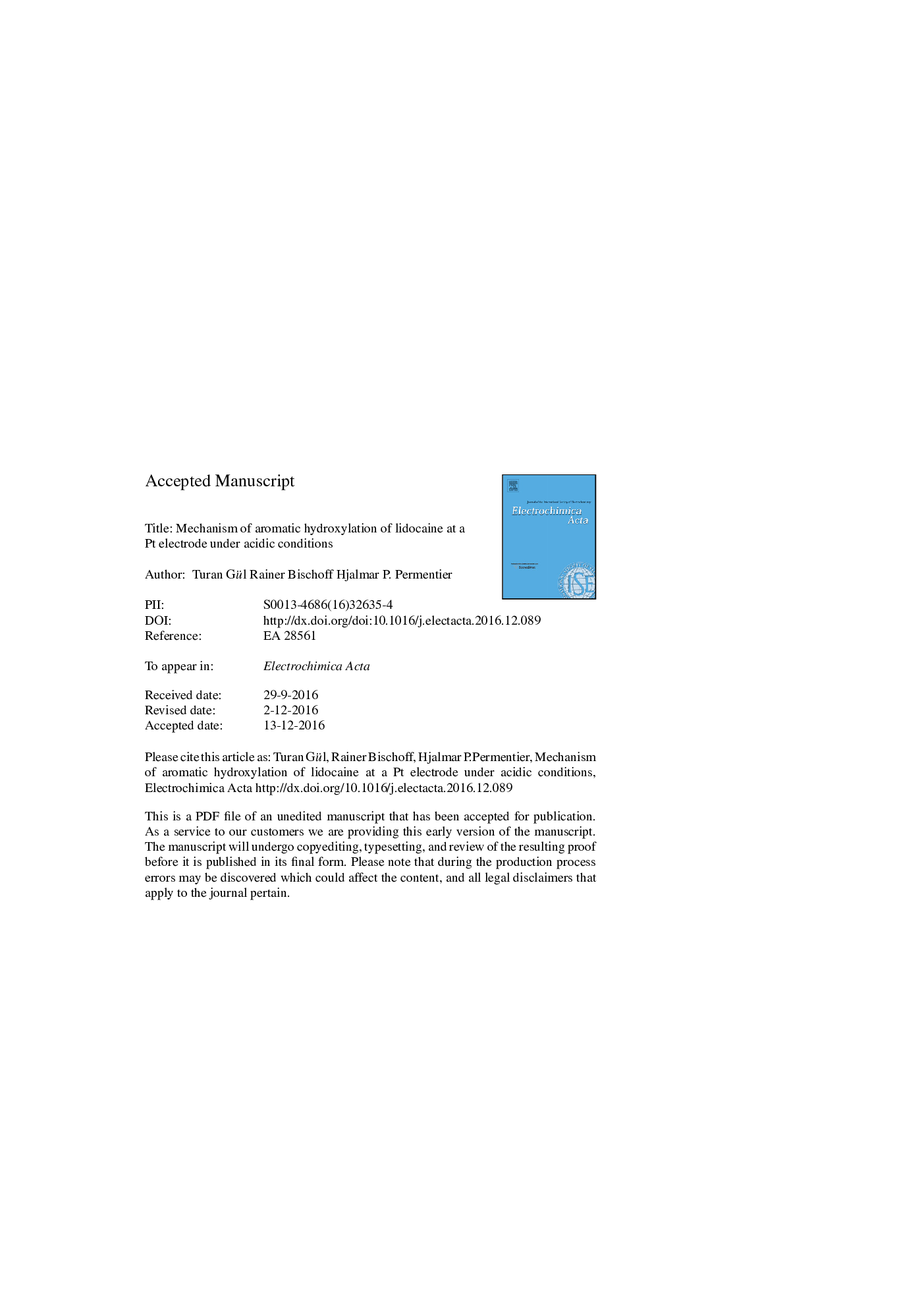| کد مقاله | کد نشریه | سال انتشار | مقاله انگلیسی | نسخه تمام متن |
|---|---|---|---|---|
| 4767587 | 1424133 | 2017 | 19 صفحه PDF | دانلود رایگان |
عنوان انگلیسی مقاله ISI
Mechanism of aromatic hydroxylation of lidocaine at a Pt electrode under acidic conditions
دانلود مقاله + سفارش ترجمه
دانلود مقاله ISI انگلیسی
رایگان برای ایرانیان
کلمات کلیدی
موضوعات مرتبط
مهندسی و علوم پایه
مهندسی شیمی
مهندسی شیمی (عمومی)
پیش نمایش صفحه اول مقاله

چکیده انگلیسی
Aromatic hydroxylation reactions, which are mainly catalyzed by cytochrome P450 (CYP) enzymes in vivo, are some of the most important reactions of Phase I metabolism, because insertion of a hydroxyl group into a lipophilic drug compound increases its hydrophilicity and prepares it for subsequent Phase II metabolic conjugation reactions as a prerequisite to excretion. Aromatic hydroxylation metabolites of pharmaceuticals may be obtained through various synthetic and enzymatic methods Electrochemical oxidation is an alternative with advantages in terms of mild reaction conditions and less hazardous chemicals. In the present study, we report that aromatic hydroxylation metabolites of lidocaine can be readily obtained electrochemically under aqueous acidic conditions at platinum electrodes. Our results show that the dominant N-dealkylation reaction can be suppressed by decreasing the solution pH below 0.5 resulting in selective 3-hydroxylidocaine, which is an in vivo metabolite of lidocaine. Experiments in 18O labelled water indicated that water is the primary source of oxygen, while dissolved molecular oxygen contributes to a minor extent to the hydroxylation reaction.
ناشر
Database: Elsevier - ScienceDirect (ساینس دایرکت)
Journal: Electrochimica Acta - Volume 224, 10 January 2017, Pages 636-641
Journal: Electrochimica Acta - Volume 224, 10 January 2017, Pages 636-641
نویسندگان
Turan Gul, Rainer Bischoff, Hjalmar P. Permentier,